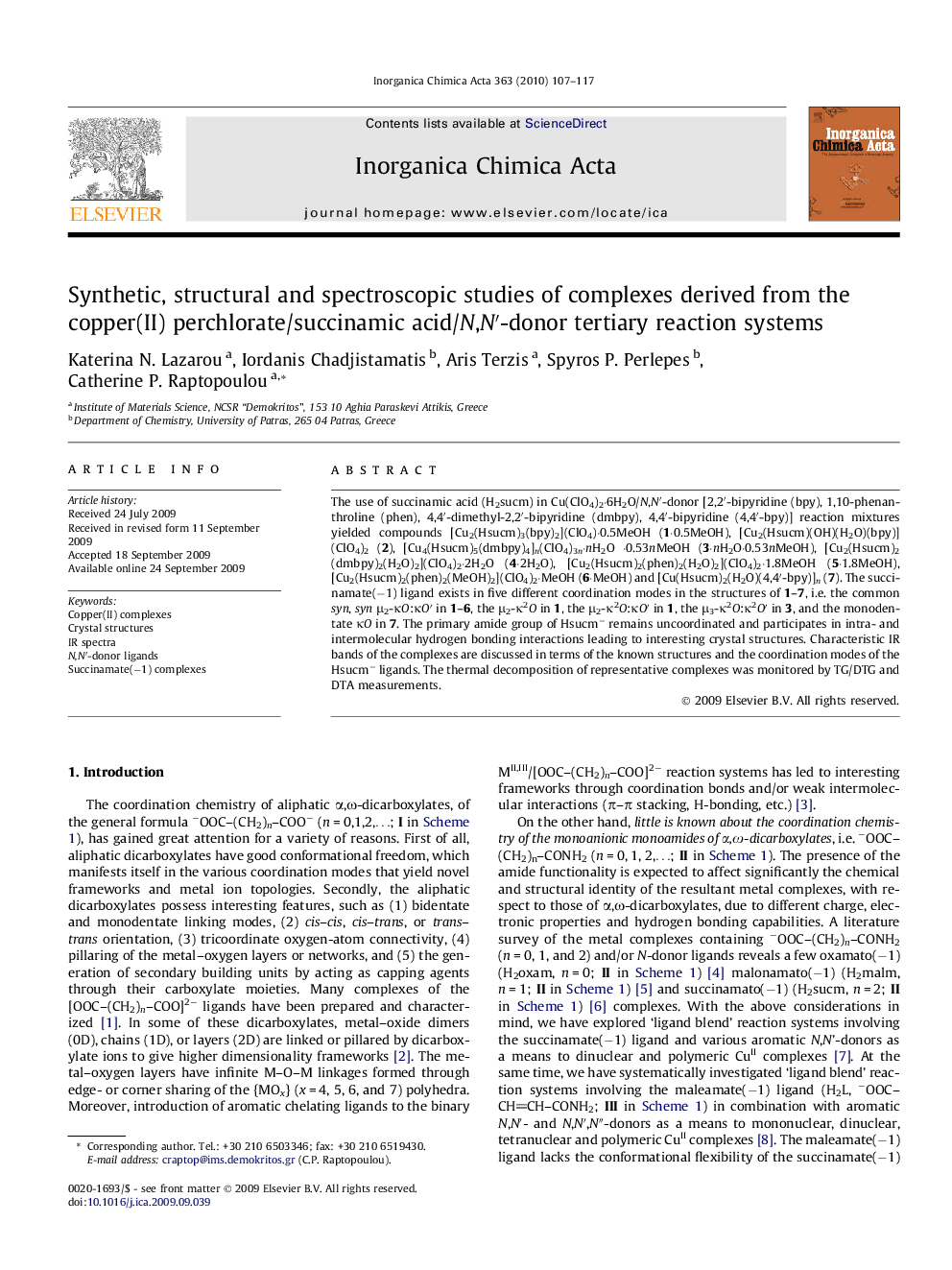| Article ID | Journal | Published Year | Pages | File Type |
|---|---|---|---|---|
| 1311303 | Inorganica Chimica Acta | 2010 | 11 Pages |
The use of succinamic acid (H2sucm) in Cu(ClO4)2·6H2O/N,N′-donor [2,2′-bipyridine (bpy), 1,10-phenanthroline (phen), 4,4′-dimethyl-2,2′-bipyridine (dmbpy), 4,4′-bipyridine (4,4′-bpy)] reaction mixtures yielded compounds [Cu2(Hsucm)3(bpy)2](ClO4)·0.5MeOH (1·0.5MeOH), [Cu2(Hsucm)(OH)(H2O)(bpy)](ClO4)2 (2), [Cu4(Hsucm)5(dmbpy)4]n(ClO4)3n·nH2O ·0.53nMeOH (3·nH2O·0.53nMeOH), [Cu2(Hsucm)2(dmbpy)2(H2O)2](ClO4)2·2H2O (4·2H2O), [Cu2(Hsucm)2(phen)2(H2O)2](ClO4)2·1.8MeOH (5·1.8MeOH), [Cu2(Hsucm)2(phen)2(MeOH)2](ClO4)2·MeOH (6·MeOH) and [Cu(Hsucm)2(H2O)(4,4′-bpy)]n (7). The succinamate(−1) ligand exists in five different coordination modes in the structures of 1–7, i.e. the common syn, syn μ2-κO:κO′ in 1–6, the μ2-κ2O in 1, the μ2-κ2O:κO′ in 1, the μ3-κ2O:κ2O′ in 3, and the monodentate κO in 7. The primary amide group of Hsucm− remains uncoordinated and participates in intra- and intermolecular hydrogen bonding interactions leading to interesting crystal structures. Characteristic IR bands of the complexes are discussed in terms of the known structures and the coordination modes of the Hsucm− ligands. The thermal decomposition of representative complexes was monitored by TG/DTG and DTA measurements.
Graphical abstractThe use of succinamic acid (H2sucm) in Cu(ClO4)2·6H2O/N,N′-donor (bpy, phen, dmbpy, 4,4′-bpy) reaction mixture yielded dinuclear complexes and 1D coordination polymers. The coordinative versatility of the succinamate(−1) ligand is reflected in the five different ligation modes observed, whereas its hydrogen bonding ability gives rise to interesting 1D, 2D and 3D crystal structures.Figure optionsDownload full-size imageDownload as PowerPoint slide
